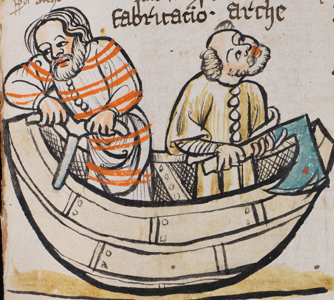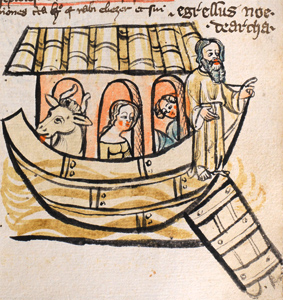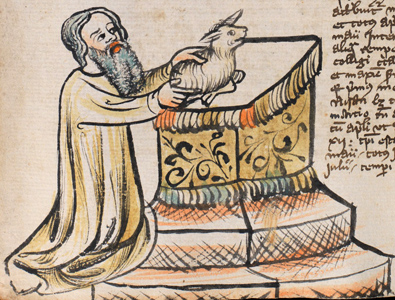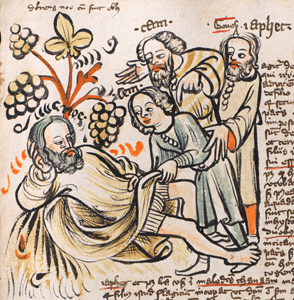
Folio 25v. The inscription means "The building of the ark." The man on the left is using a medieval auger, which is used to drill holes for the pegs that hold a wooden structure together. The man on the right has a medieval broad axe, which is used for squaring and shaping a timber. Unlike modern axes, the shaft goes into a socket in the head.1

Folio 26v. At the bottom a raven (labeled corvus) pecks at the corpse of a dog. The inscription to its left means "the entry of noah into the ark," but this is not quite accurate because the dove is already arriving on the left with the olive branch. The people and animals look out from windows shaped like those in Romanesque churches. It is surely not a coincidence that the animals chosen are those that will witness the birth of Jesus.

Folio 27r. The inscription means "the exit of Noah from the ark."

Folio 29v. The corresponding text is Genesis 8:20: "And Noe built an altar unto the Lord: and taking of all cattle and fowls that were clean, offered holocausts upon the altar." Note, however, that the one animal shown here is a lamb, again referring to Jesus.

Folio 31v. This is from Genesis 9:20-23. Noah plants a vine, makes wine from the grapes, and falls asleep drunk and naked. Cham points mockingly to his father, but Sem covers Noah, helped by Japhet behind him. Surprise, this episode was interpreted as a prefigurement of the Passion of Christ.